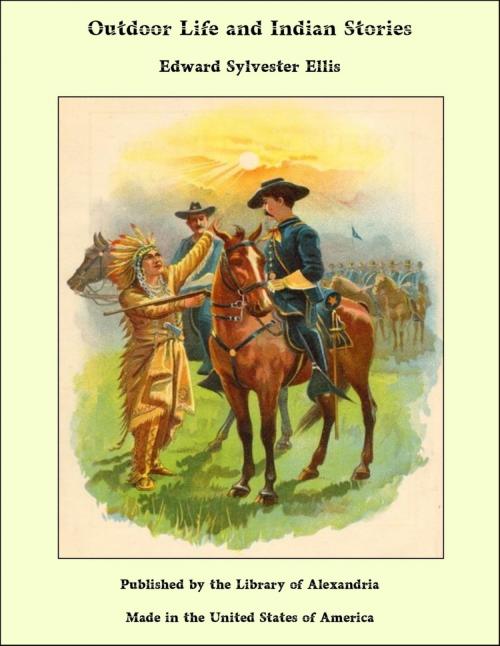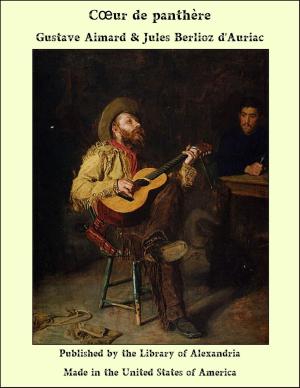Outdoor Life and Indian Stories
Nonfiction, Religion & Spirituality, New Age, History, Fiction & Literature| Author: | Edward Sylvester Ellis | ISBN: | 9781465626004 |
| Publisher: | Library of Alexandria | Publication: | March 8, 2015 |
| Imprint: | Language: | English |
| Author: | Edward Sylvester Ellis |
| ISBN: | 9781465626004 |
| Publisher: | Library of Alexandria |
| Publication: | March 8, 2015 |
| Imprint: | |
| Language: | English |
The first thing to be considered on going into the forest is the camp where the night is to be spent. In choosing a place for this see that there is fresh water, wood for the fire and brush-wood for building a "lean-to," or hut, at hand. It is well to build on a dry, level place, with just enough slope to the ground to insure the water running away in case of rain. The Indians used to live in huts thatched with brush-wood, and these are best made by building what is known as a "lean-to." Look for two trees standing from eight to ten feet apart on your camping place, with branches from six to eight feet above the ground. By placing a pole from one tree to the other in the crotches and leaning other poles against this one, brush-wood can be woven in to form a very good roof. Branches of the balsam or hemlock are best for this purpose, and the needles should point down. It is well to collect as many soft, thick tips of trees of this character as possible, both for the thatching and to make the beds. Cover the floor of the "lean-to" with these tips thickly and lay the rubber blankets on top, rubber side down. Be sure to make the head of your bed toward the inside and away from the opening. You will find that this makes a very comfortable bed. In olden times, before the Indians had matches, and even before they had the flint and steel that our grandfathers used for making fire, they used rubbing-sticks. Many people have tried to make fire in this manner, but few have succeeded. As a matter of fact, it is not a very difficult thing to do if you know how, as the Indians did. In fact, they grew so expert that they could make fire almost as quickly as we can strike a match. The easiest and surest method of doing this is to use the bow-drill. The tools necessary consist of a bow, or bent stick, about two feet long, with a stout leather cord attached to each end. The drill consists of a straight piece of wood pointed at each end. One end of this rests in a drill-socket, which is simply a piece of wood with a small notch in it for the top of the fire-drill. This piece of wood is held in the hand, while the other end of the fire-drill is placed in the fire-board. This consists of a thin piece of wood with small pits cut about half an inch from the edge, and with a notch extending from the edge into the middle of the pit. The leather thong is given a single turn about the fire-drill and then by drawing the bow backward and forward the drill is caused to rotate very rapidly in the fire-board. After a short while the dust which comes out of the notch grows hot and becomes a glowing coal, which can be easily ignited into a blazing fire.
The first thing to be considered on going into the forest is the camp where the night is to be spent. In choosing a place for this see that there is fresh water, wood for the fire and brush-wood for building a "lean-to," or hut, at hand. It is well to build on a dry, level place, with just enough slope to the ground to insure the water running away in case of rain. The Indians used to live in huts thatched with brush-wood, and these are best made by building what is known as a "lean-to." Look for two trees standing from eight to ten feet apart on your camping place, with branches from six to eight feet above the ground. By placing a pole from one tree to the other in the crotches and leaning other poles against this one, brush-wood can be woven in to form a very good roof. Branches of the balsam or hemlock are best for this purpose, and the needles should point down. It is well to collect as many soft, thick tips of trees of this character as possible, both for the thatching and to make the beds. Cover the floor of the "lean-to" with these tips thickly and lay the rubber blankets on top, rubber side down. Be sure to make the head of your bed toward the inside and away from the opening. You will find that this makes a very comfortable bed. In olden times, before the Indians had matches, and even before they had the flint and steel that our grandfathers used for making fire, they used rubbing-sticks. Many people have tried to make fire in this manner, but few have succeeded. As a matter of fact, it is not a very difficult thing to do if you know how, as the Indians did. In fact, they grew so expert that they could make fire almost as quickly as we can strike a match. The easiest and surest method of doing this is to use the bow-drill. The tools necessary consist of a bow, or bent stick, about two feet long, with a stout leather cord attached to each end. The drill consists of a straight piece of wood pointed at each end. One end of this rests in a drill-socket, which is simply a piece of wood with a small notch in it for the top of the fire-drill. This piece of wood is held in the hand, while the other end of the fire-drill is placed in the fire-board. This consists of a thin piece of wood with small pits cut about half an inch from the edge, and with a notch extending from the edge into the middle of the pit. The leather thong is given a single turn about the fire-drill and then by drawing the bow backward and forward the drill is caused to rotate very rapidly in the fire-board. After a short while the dust which comes out of the notch grows hot and becomes a glowing coal, which can be easily ignited into a blazing fire.















